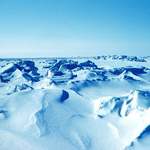From the fracking fields of Texas to the bizarre butcheries of mainland China, here are Andy’s highlights for the week behind and the week ahead.
The Week Behind:
A Closer Look at Fracking Emissions
 This week began with the publication in the Proceedings of the National Academy of Sciences of the first in a planned batch of 16 papers probing emissions and leaks from hydraulically fractured, or fracked, natural gas wells. The analysis, led by David T. Allen and other energy and environment researchers at the University of Texas, finds that estimates of methane escaping from gas drilling made by the Environmental Protection Agency are fairly accurate, over all, while those from industry critics and some indirect studies of leakage (from aerial measurements, for example) appear far too high. Here’s the New York Times story.
This week began with the publication in the Proceedings of the National Academy of Sciences of the first in a planned batch of 16 papers probing emissions and leaks from hydraulically fractured, or fracked, natural gas wells. The analysis, led by David T. Allen and other energy and environment researchers at the University of Texas, finds that estimates of methane escaping from gas drilling made by the Environmental Protection Agency are fairly accurate, over all, while those from industry critics and some indirect studies of leakage (from aerial measurements, for example) appear far too high. Here’s the New York Times story.
An End to the Coal Age?
The Associated Press reported on slowly building evidence that coal, after becoming a prime driver (along with oil) of the last two centuries of global industrial growth, may be on its way to being just a shiny black rock again (it was used in Roman jewelry sometimes). Here’s an excerpt:
Economic forces, pollution concerns and competition from cleaner fuels are slowly nudging nations around the globe away from the fuel that made the industrial revolution possible.
The U.S. will burn 943 million tons of coal this year, only about as much as it did in 1993. Now it’s on the verge of adopting pollution rules that may all but prohibit the construction of new coal plants. And China, which burns 4 billion tons of coal a year — as much as the rest of the world combined — is taking steps to slow the staggering growth of its coal consumption and may even be approaching a peak.
Michael Parker, a commodities analyst at Bernstein Research, calls the shift in China “the beginning of the end of coal.”
North Polar Sea Ice
At this time of year, as the sun sets over the North Pole for the long boreal winter, there’s almost invariably a flurry of spin surrounding the state of Arctic Ocean sea ice. After a summer of nonstop sun and warmer temperatures, the floating sea ice reaches its minimum extent before expanding again for the winter.
Here’s a snippet from my Dot Earth post putting this year’s ice retreat in broader context:
With the annual pullback of Arctic Ocean sea ice at an end, it’s clear that this year’s retreat is nowhere near the satellite-era record set in 2012, but it’s also clear that there is still a long-term trajectory toward a largely open-water Arctic in summers in coming decades. [Read the rest here.]
Pork Masquerading as Beef
When is a cow not a cow? In China, when it’s a dressed-up pig. That’s how I used Twitter to summarize news from China that authorities made arrests after uncovering an operation using additives of various kinds to make cheaper pork look like pricey beef. Keep in mind that in the United States similar masquerades happen frequently with fish.
The Week Ahead:
Next Friday will see the release of the first section of the latest report from the Intergovernmental Panel on Climate Change, created by the world’s governments in 1988 to assess factors contributing to climate change along with its impacts on societies and ecosystems and possible responses. There’s been a lot of discussion and spin, particularly coming from factions who generally recoil at environmental regulation or seek to maintain the world’s dependence on fossil fuels.
In the meantime, the Union of Concerned Scientists is running a useful series of posts on the history and operation of the I.P.C.C.













Trackbacks/Pingbacks